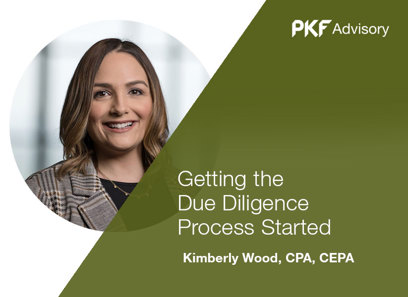Common Misconceptions in Understanding PPA Allocation
Wiki Article
A Comprehensive Overview to Understanding Purchase Price Allocation in Mergers and Acquisitions
Comprehending Purchase Price Allocation (PPA) is crucial in the world of mergings and acquisitions, as it straight influences economic coverage and calculated decision-making. By properly distributing the purchase cost amongst identifiable possessions and responsibilities, organizations can ensure compliance with accounting requirements while optimizing their economic end results.Interpretation of Purchase Price Allocation

The PPA process typically begins with the recognition of the acquisition day, after which the acquirer should establish the total acquisition price. This total includes not only money settlements however additionally any contingent factor to consider, supply transfers, and obligations thought. The following action entails alloting this purchase price to the fair value of each identifiable property and obligation, which can consist of real estate, equipment, copyright, and other intangible possessions.
Moreover, any excess acquisition rate beyond the fair value of identifiable internet possessions is categorized as goodwill. Accurate PPA is necessary as it influences monetary coverage, tax implications, and future incomes projections. By adhering to appropriate audit criteria, such as IFRS 3 or ASC 805, companies make certain conformity and transparency in monetary reporting, which is important for stakeholders and investors.
Importance of PPA in M&A
Accurate purchase cost appropriation (PPA) plays a considerable role in mergings and acquisitions, affecting numerous aspects of the bargain's economic and functional results. Correctly performed PPA makes certain that the purchase price is appropriately distributed among the identifiable possessions obtained and liabilities presumed, supplying a clear photo of the investment's worth. This allocation is crucial for monetary reporting and conformity with accounting criteria, as it directly influences the acquirer's equilibrium sheet and earnings statement.
Furthermore, PPA has ramifications for tax factors to consider. By precisely determining intangible properties and their particular values, firms can maximize amortization timetables and tax obligation reductions, inevitably influencing their capital. Furthermore, a well-structured PPA can improve the understanding of harmonies prepared for from the deal, guiding critical decision-making post-acquisition.
In the affordable landscape of M&A, reliable PPA can likewise facilitate settlements, as it offers clearness and openness relating to the assessment and worth of the target firm. This accuracy can promote trust among stakeholders and add to smoother integration processes. Inevitably, the relevance of PPA in M&A can not be overstated, as it lays the structure for audio economic management and tactical development campaigns adhering to the deal.
Trick Elements of PPA
A thorough understanding of the essential elements of acquisition price allocation (PPA) is necessary for properly taking care of the intricacies of mergings and procurements. The main aspects of PPA include the identification of the acquisition price, the reasonable worth analysis of acquired possessions and responsibilities, and the subsequent category of these aspects.Originally, the purchase cost stands for the complete factor to consider moved by the acquirer, including cash, supply, and various other types of payment. Next, the reasonable worth of acquired identifiable properties and liabilities must be determined, which commonly incorporates concrete possessions such as residential property and equipment, in addition to intangible possessions like hallmarks, patents, and customer relationships. Precise evaluation is critical, as it influences monetary reporting and tax obligation ramifications.
In addition, responsibilities presumed in the transaction, consisting of contingent responsibilities and financial debt, need to be examined at reasonable worth. The distinction in between the overall purchase rate and the reasonable worths of recognizable possessions and liabilities leads to goodwill, which shows the premium paid for synergies and abilities not individually identifiable. Recognizing these elements ensures compliance with bookkeeping requirements and enhances critical decision-making throughout the M&A process.
Methods for PPA
Various methodologies are utilized to perform purchase price appropriation (PPA), each offering unique methods to valuing acquired possessions and responsibilities - Understanding PPA Allocation. The most common methods consist of the cost method, market method, and income strategyThe price strategy concentrates on the replacement cost of the assets, approximating what it would certainly take to recreate the property in its present problem. This technique is specifically valuable for tangible properties, such as residential or commercial property and devices.

The earnings method, on the other hand, stresses today value of future money flows expected to be produced by the possessions. This method is specifically appropriate for intangible assets, such as licenses and trademarks, where future performance can be forecasted.
Picking the proper technique hinges on the nature of the gotten possessions, market problems, and the specific context of the deal. Utilizing a mix of these techniques might additionally generate an extra comprehensive sight of the reasonable value of the assets and responsibilities included.
Finest Practices for Efficient PPA
Just how can companies ensure a smooth purchase rate appropriation (PPA) process? Implementing ideal methods is critical for achieving precision and compliance. Companies should establish a clear structure that defines roles and obligations throughout the PPA process. This consists of identifying key stakeholders-- such as financing, lawful, and operational groups-- that will add to information collection and analysis.Second, organizations need to gather extensive and dependable information associated with the acquired assets and liabilities. This includes conducting extensive due diligence to analyze fair value and accounting implications accurately. Using third-party assessment experts can enhance neutrality and make sure adherence to pertinent bookkeeping standards.
Additionally, it is important to keep open lines of interaction amongst all events entailed. Normal conferences can promote the exchange of understandings and resolve any kind of prospective inconsistencies early at the same time.
Last but not least, organizations should record all presumptions, approaches, and searchings for diligently. This not only help in compliance yet also functions as a recommendation for future purchases - Understanding Purchase Price Allocation in Mergers and Acquisitions. By adhering to these best methods, companies can enhance the effectiveness and efficiency of their PPA procedure, eventually supporting far better economic coverage and strategic decision-making
Conclusion
In verdict, Purchase Price Allocation (PPA) is an essential procedure in mergers and procurements that ensures precise valuation of identifiable properties and obligations. Efficient PPA not just maximizes monetary reporting Understanding PPA Allocation and tax obligation effects however likewise reinforces the critical foundation of the getting entity.Report this wiki page